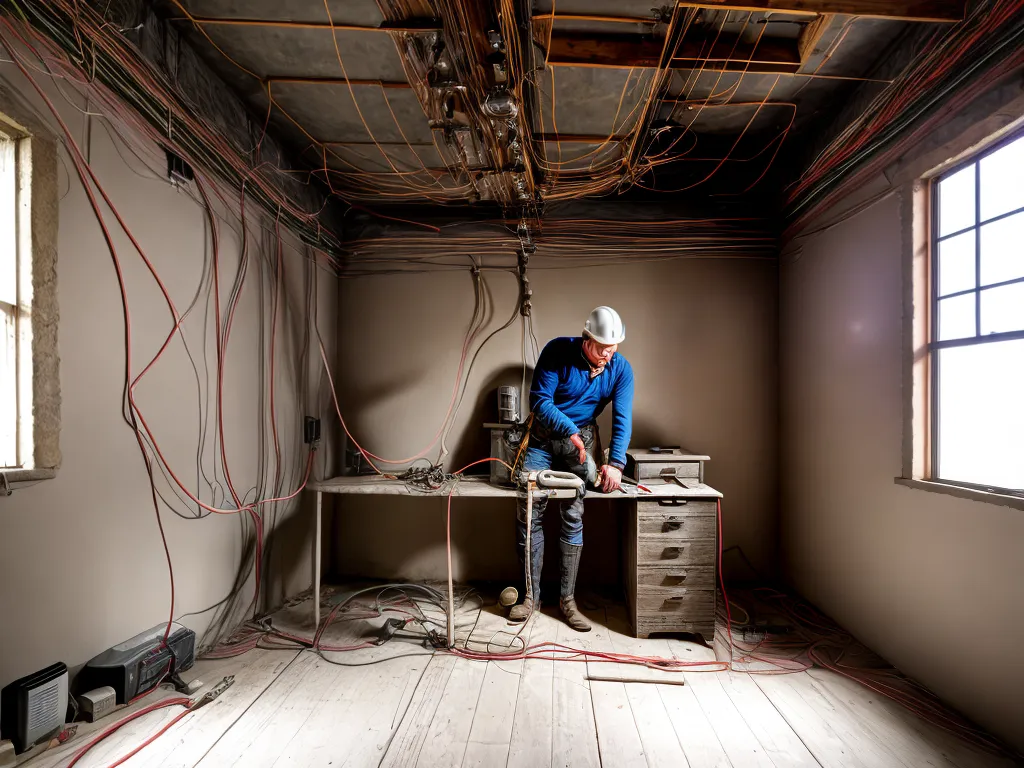
How Early Electricians Hardwired Homes Before Romex
Introduction
As an early 20th century electrician, wiring homes before the invention of Romex cable was a challenging task that required patience, skill, and resourcefulness. In this article, I will take you on a journey back in time to walk through the step-by-step process of how I hardwired homes in the early days of residential electricity. From pulling armored cable to fabricating custom switch boxes, every detail will be covered to give you an in-depth look at the blood, sweat, and tears that went into bringing power to homes across America. Stick with me through the nitty-gritty of knob and tube wiring, and you’ll gain a true appreciation for modern electrical conveniences we now take for granted.
Wiring Systems Before Romex
Prior to the 1920s, homes did not have anything resembling the flexible Romex cables we use today. Early electricians had to work with stiff, heavy, and difficult-to-install armored cable (AC) or use open, exposed wiring systems like knob and tube.
Armored Cable (AC)
AC cable consisted of insulated copper conductors wrapped in a spiral metal armor. It was hard to maneuver around corners and through wood framing. Installing AC cable involved:
- Running cable through holes drilled in wood framing
- Securing cable with metal staples hammered into framing members
- Removing armor at endpoints to access the insulated conductors inside
- Connecting conductors to light fixtures, switches, and outlets
The metal armor grounded the system and protected against damage, but it also made AC cable bulky and rigid.
Knob and Tube Wiring
This early wiring method used individual rubber-insulated wires run through porcelain knobs attached to framing.Air provided insulation between hot and neutral wires. Key steps for knob and tube installation:
- Running separate hot and neutral wires through holes drilled in framing
- Securing wires 8 inches apart with porcelain knobs
- Keeping at least 1 inch away from surfaces with porcelain tubes
- Splicing wires together with twist-on connectors
- No ground wire, relying on air for insulation
While this system worked well when properly installed, the exposed hot wires posed a shock hazard. Space constraints could also make running two separate wires difficult.
Fabricating Custom Boxes and Conduit
With no Romex or off-the-shelf electrical boxes, I had to fabricate custom switch and outlet boxes myself. This was a laborious process of joining pieces of metal conduit and cutting holes for device mounting.
Metal Conduit
Various diameters of threaded rigid metal conduit were available to protect wires through framing and masonry. I would measure and cut pieces to length for each box using hacksaws and pipe cutters.
Junction Boxes
Constructing a metal junction box involved:
- Cutting four pieces of conduit to size for top, bottom, and sides
- Drilling holes for conduit connectors and clamps
- Joining the pieces together tightly with conduit fittings
- Attaching a cover plate with cutouts for devices
Running Conduit
After fabricating boxes, I ran conduit between them to enclose and protect wires:
- Securing conduit with clamps and fittings to framing
- Cutting threads and screwing conduit together tightly
- Pulling wires through installed conduit runs
- Bonding conduit for grounding purposes
It was challenging fishing wires through long conduit bends. Proper threading and sealing were crucial to prevent shorts.
Installing Early Wiring Devices
The switches, outlets, and light fixtures of the early 1900s were also much different than modern options.
Knife Switches
These switches required manually sliding blades onto metal contact clips to complete circuits. They created sparks and needed to be fully enclosed.
Porcelain Light Sockets
Early Edison-style bulbs screwed into porcelain sockets. Wiring them meant connecting hot and neutral wires with set screws on the sides.
Two-Prong Outlets
Receptacles had just two prongs and no ground. Some even lacked a neutral and got by with just a hot. Any appliances used needed compatible two-prong plugs.
Conclusion
And there you have it - a glimpse into the challenging world of wiring homes before Romex simplified everything. It makes me appreciate being able to pull easy-to-work-with cables through finished walls. Can you imagine having to fabricate all your own boxes and conduits from scratch? The next time you install a modern plastic switch box in minutes, take a moment to thank early electricians like myself who did things the hard way. Our blood, sweat, and tears paved the way for the convenience you enjoy today!